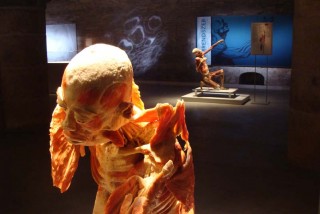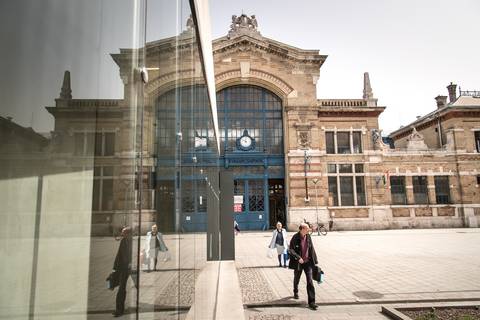The human body has been bathing in limelight in Budapest and that at two different sites but with the very same content - the BODIES2 and The Human Body exhibitions have arrived. Both have had ample advertising, which confused the public as to where exactly they can marvel at our biological self. All have been made clear, however. The latter is at 1 Váci utca, while the second part of BODIES is at VAM Design Center.
Everybody’s interested The two exhibitions await visitors totally independently of each other. You can’t really miss, no matter which you choose. Both venues show you what makes some want to throw up and at the sight of what others, who are more experienced with interactive exhibitions, do not even flinch. They’re about us and from the inside. Inside out, taken apart, preserved and interpreted as a map. On the one hand, it’s all very real because you can see the organs, and the different layers of the human body on once living human bodies. On the other hand, you can’t always see the authenticity of the displayed human parts. Sometimes you feel like you’re in a biology lesson wishing there was a third exhibition to go to, where bold artists display hearts pumping artificial blood, muscles moved by electricity and bowels to touch. Or are human beings more than toys?Gunther’s dream
Many believe that the sight of static, untouchable corpses explicitly donated for scientific purposes is horrible and ethically unacceptable. The Bodies exhibition in Hungary in 2008 was met with quite controversial reception. But why couldn’t organs be preserved from the inside? It was the general question posed by Gunther von Hagens, professor of anatomy decades ago. As an answer he proved that they could and since has mastered the process of plastination, that is, the filling up of organs with silicone polymer from the inside after draining water. Why couldn’t this be made visible? There’s a high probability that the replies to this question differ to a great extent. The first exhibition putting corpses on display with this method was Body Worlds in Japan in 1995. Gunther has applied this method to animals, as well, and recently he’s been selling plastinated human organs for a few hundred euros. More companies have started displaying human bodies preserved with plastination, and these projects proved to be extremely successful.Bodies in Budapest
The exhibitions differ in their atmospheres at the most but both are informative and are rather esthetic than disgusting – though one might argue against it. BODIES2 makes use of projected works of art with magnified images, whereas The Human Body utilizes videos. Both are preventive in nature, that is, they show how various diseases deform organs. The Human Body is the better at providing extensive information with its descriptions but there are medical students available at both places to help visitors if needed. BODIES2 has more authentic colors but The Human Body is clearer, though, some might find the dungeon-like nature of VAM more. Adult tickets for the former cost 3300 HUF on weekdays, while this price is 3500 HUF for the latter. Whichever you may choose (because one of them is a must), you’re in for some interesting sight. Also, you might learn some new information based on your age and interests. It’s important to keep in mind that the things on display were once human beings - be prepared for the wow effect.




